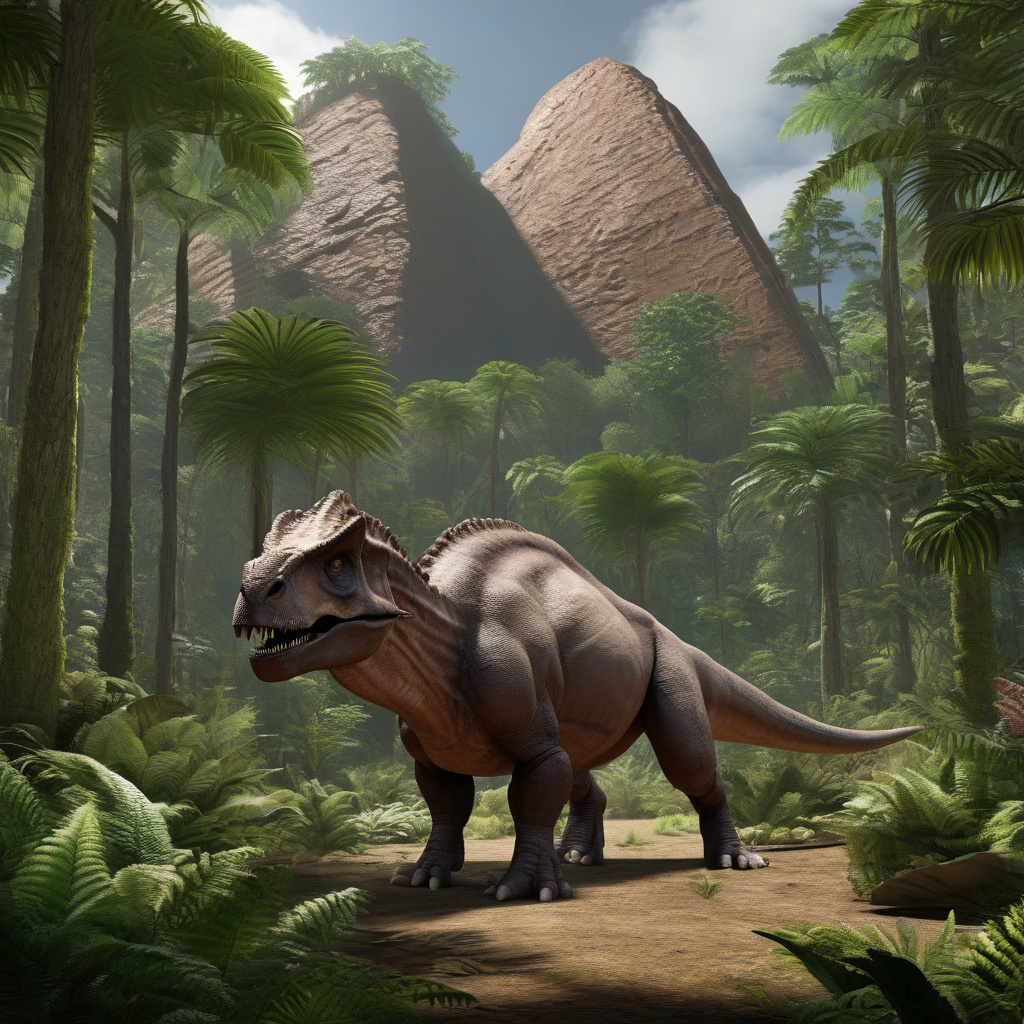A 120-Million-Year-Old Bison-Sized Dinosaur with Sail-Spine Discovered in England
A new species of sail-backed dinosaur has been discovered on the Isle of Wight, an island off the south coast of England. This incredible find has stunned paleontologists and researchers, shedding light on the diverse range of dinosaurs that once roamed the earth over 100 million years ago.
The dinosaur, named Vectaerovenator inopinatus, belonged to the group of theropods, which are known for their sharp teeth, clawed hands, and bipedal stance. What sets this newly discovered species apart is the prominent sail-like structure on its back, believed to have been used for display purposes rather than for regulating body temperature.
Measuring around 4 meters in length, Vectaerovenator inopinatus was roughly the size of a bison, making it a formidable predator in its time. Its remains were found in rocks dating back to the Cretaceous period, offering researchers a rare glimpse into the ancient ecosystems that existed in what is now modern-day England.
The discovery of this sail-spined dinosaur adds to the growing body of evidence that suggests dinosaurs were far more diverse and varied than previously thought. It challenges our perceptions of these ancient creatures and highlights the importance of continued exploration and research in the field of paleontology.
Dr. Chris Barker, a PhD student at the University of Southampton who led the study, described the find as “unexpected,” underscoring the unpredictable nature of scientific discovery. He noted that the Isle of Wight has proven to be a treasure trove of dinosaur fossils, with new species being unearthed on a regular basis.
The study detailing the discovery of Vectaerovenator inopinatus was published in the journal Papers in Palaeontology, providing a comprehensive analysis of the dinosaur’s skeletal remains. Through meticulous examination and comparison with other dinosaur species, researchers were able to piece together a clearer picture of this remarkable creature.
The significance of this discovery extends beyond the scientific community, capturing the imagination of the general public and sparking renewed interest in dinosaurs and prehistoric life. Museums and educational institutions are likely to feature Vectaerovenator inopinatus in their exhibits, allowing people of all ages to learn about this fascinating chapter in Earth’s history.
As we continue to unearth new fossils and expand our knowledge of ancient life forms, it is essential to preserve these discoveries for future generations. The Isle of Wight and other sites around the world serve as reminders of the rich biodiversity that once existed on our planet, offering valuable insights into evolution, extinction, and the interconnectedness of all living beings.
The discovery of the 120-million-year-old bison-sized dinosaur with a sail-spine in England is a testament to the enduring allure of dinosaurs and the endless possibilities for exploration and discovery that lie buried beneath the Earth’s surface. It serves as a reminder of the importance of curiosity, perseverance, and collaboration in unraveling the mysteries of the past.
#DinosaurDiscovery, #IsleOfWight, #Paleontology, #AncientLife, #ScientificResearch











